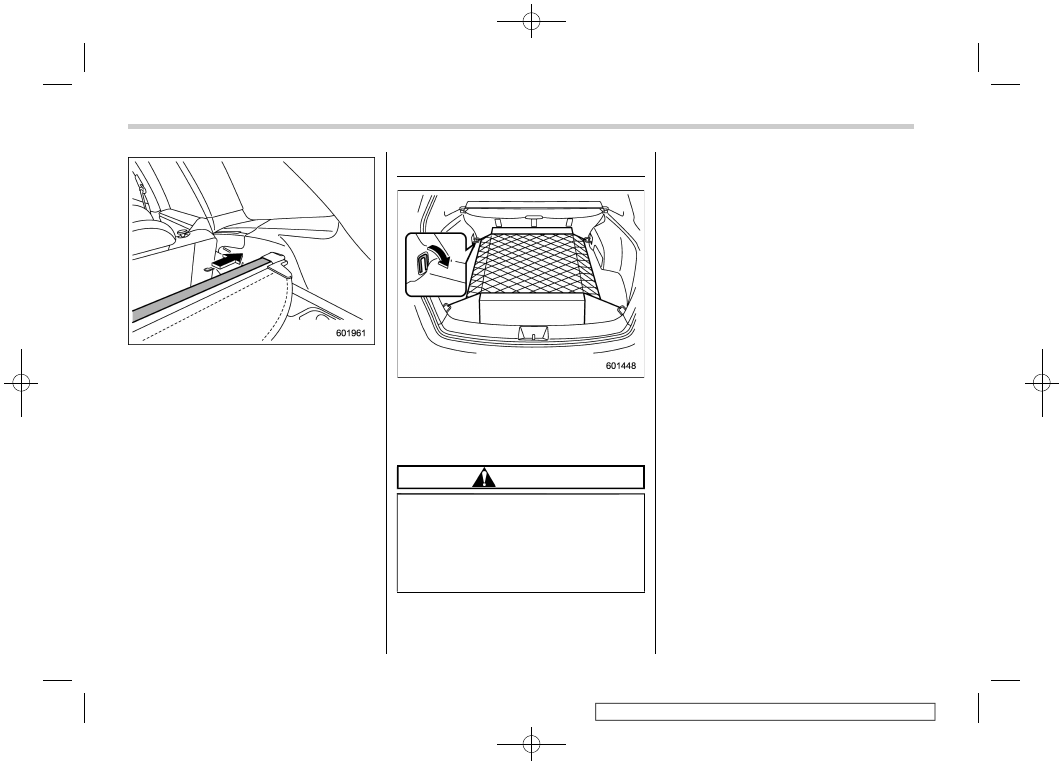Subaru Forester (2019). Instruction - part 35

(290,1)
2. Push the cover housing to the right
side and shorten the bar.
3. Insert the other protrusion into the
recess of the other retainer.
6-11. Cargo tie-down hooks
The cargo area is equipped with several
tie-down hooks so that cargo can be
secured with a cargo net or ropes.
When using the front tie-down hooks, turn
them down out of the storing recesses.
CAUTION
The cargo tie-down hooks are de-
signed only for securing light cargo.
Never try to secure cargo that ex-
ceeds the capacity of the hooks. The
maximum load capacity is 22 lbs (10
kg) per hook.
Cargo tie-down hooks
288